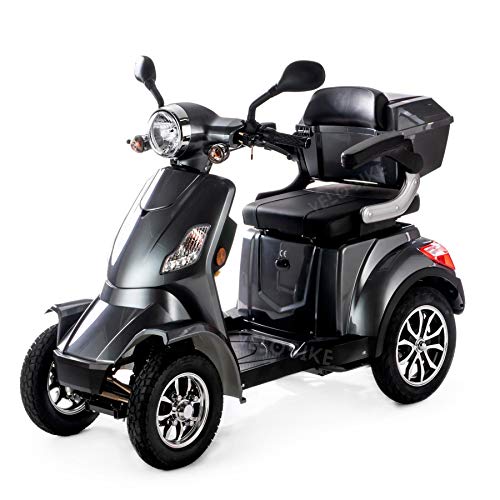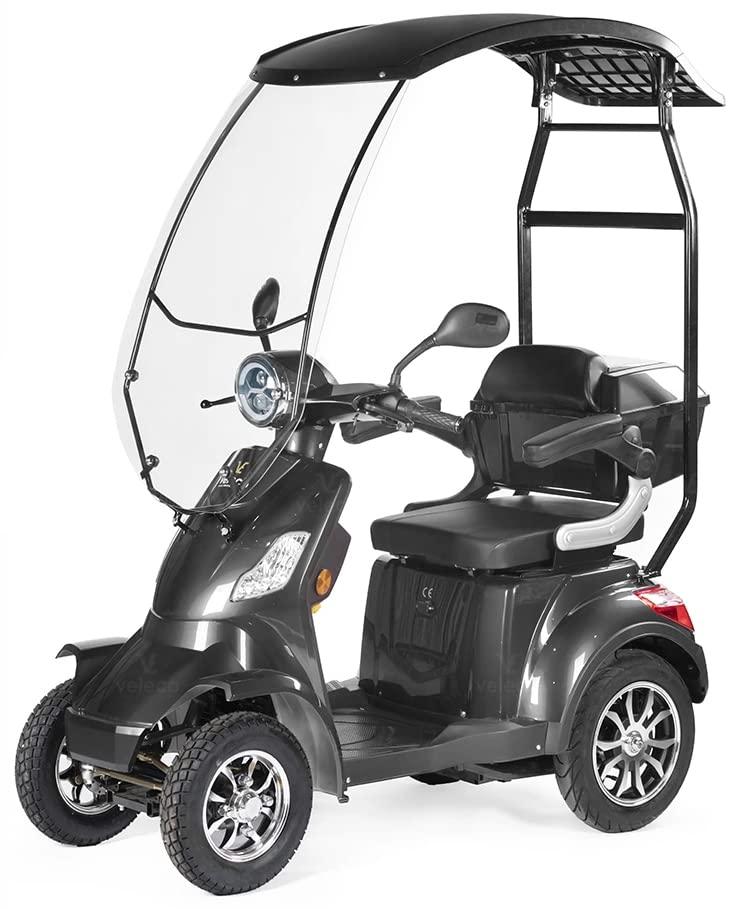상품홍보 Its History Of Electric Micro-Mobility
페이지 정보

본문
 NYCHA and EV Micro-Mobility
NYCHA and EV Micro-MobilityThe EV micro-mobility system is an affordable way to fill first-and-last-mile gaps and can be used in conjunction with public transportation. NYCHA recognizes the importance of e-bikes, escooters and shared e-scooters that are available to people with low incomes.
 They also pose an array of unique challenges. In particular, they require to be tracked and monitored.
They also pose an array of unique challenges. In particular, they require to be tracked and monitored.Accessibility
Electric micro-mobility is an accelerating segment of the transportation industry. It provides significant opportunities for service providers and technology to change the paradigm of urban mobility and reduce congestion. However, the rapid growth of this sector has also created challenges for the industry. These challenges include data gathering as well as safe battery installation and planning charging infrastructure. These issues must be addressed to ensure that electric micro-mobility can be used by everyone including people with disabilities.
E-bikes, e-scooters, as well as other smaller, lighter electric-powered devices allow users to travel further faster, more quickly, and more comfortably than they could with traditional scooters or bikes. They are able to be used on sidewalks, city streets, bike paths, and trails. They are powered by lithium-ion battery and can travel up to 20 miles on one charge. They can be bought for personal use or rented out through a sharing system.
In cities across the world, a rising number of innovative ebike and escooter systems are integrated into their shared mobility networks. This has helped them reduce their emissions and improve their efficiency. They also offer new transportation options for those who would otherwise be dependent on transportation via cars. The availability of these vehicles has enhanced accessibility to mobility services and made it easier for communities to endure situations like weather-related disruptions and oil shortages.
In recent years, the ebike market in the United States has grown rapidly thanks to technological advancements as well as consumer demand. The market is dominated by a handful of major companies, such as Segway, Yunxi and Ninebot. These companies produce top-quality, affordable products. These companies are striving to expand their market share with aggressive marketing strategies and partnerships with bicycle manufacturers.
Although e-bikes, e-scooters electric mopeds, electric bikes, and other micro-mobility devices require a minimal amount of electricity, their popularity will increase the demand for energy on the grid. This will require a significant investment in charging stations and infrastructure. Utilities can prepare for the increased demand by leveraging smart grid technologies to study the behavior of consumers charging, launch demand-response plans, and provide incentive-based rates plans for EV charging.
Despite their promise to promote economic opportunity and social justice however, the fire risks of e-micromobility remain serious concerns. The growing number of e-micromobility devices will also require stricter rules in order to protect residents' safety. NYCHA's e-micromobility policy is designed to prevent fires and injuries while offering residents a convenient, affordable transit alternative.
Energy efficiency
electric mobility scooters Uk micro-mobility is environmentally green and uses less energy. Its battery is derived from renewable sources and emits no carbon dioxide. This is an important benefit for cities that are trying to meet carbon neutral targets and reduce air pollution. Additionally, they require less space for parking and are quieter than cars.
Whether it's an e-scooter, an e-bike, or a monowheel, these innovative vehicles are transforming the way people travel in urban areas. Their increasing popularity has led cities to look into their impact on sustainable transportation. Depending on the type of vehicle and power source, electric micromobility can help reduce traffic congestion and improve air quality and save money on fuel. The new vehicles could also challenge existing infrastructures as well as laws.
The most popular micromobility devices are e-scooters, which are small and electrically powered scooters that are hired through mobile apps. These devices are capable of traveling at speeds up to 30 km/h and can be used on bike paths, or streets. Other options for micromobility are e-bikes and rickshaws.
These new alternatives to transportation are becoming more popular and the share of EMM is expected to increase by 5-10 percent in Europe by 2030. However, researchers need to better understand the determinants of EMM use, including the individual and contextual factors. This review examines the current knowledge of the determinants of EMM use and identifies the next research areas of focus.
There are currently many barriers to the adoption of electric micromobility. The absence of a charging infrastructure for electric scooters as well as other devices is a major issue. Another concern is security. If these concerns aren't addressed, the potential benefits of transportation may be diminished.
A few cities are trying to find a way to accommodate these vehicles, without compromising the integrity and security of existing roads or bridges. One option is to create dedicated laneways for them. In this case, drivers will have to follow strict traffic laws and speed limits. Additionally, the device will need to be outfitted with special technology to perform as it should. Batteries should also be designed to meet international standards and replaced regularly.
Environmental impact
Electric micro-mobility comes with a host of environmental benefits, including lower energy consumption and emissions. The devices require electricity to run and, therefore, their use could increase demand during peak times. Utilities can reduce the impact by studying consumer charging patterns and introducing demand response programs. They can also offer net-metering for electricity consumption at the retail level and incentive-based rate plans for charging EVs. In addition, the rise of e-bike and e-scooter services offers opportunities for new investments and business models that benefit utilities.
The life cycle assessment is a key consideration when assessing the environmental impact shared electric micro-mobility. LCA provides a comprehensive evaluation of the environmental impact of shared electric micro-mobility services, by considering a variety of factors such as raw-material extraction manufacturing, energy consumption and management of end-of-life. The majority of studies employed the cumulative demand method to determine the energy consumption of the primary source. Other studies utilized other impact-assessment methods, like ReCiPe and IPCC.
The the sensitivity of GWP estimates derived from the life cycle evaluation of EMM is dependent on the duration of the vehicle as well as the battery manufacturer and material, and the power source mix for charging. Rebalancing's sensitivity is also important. About half of review studies examined scenarios for rebalancing in order to determine the effect it has on GWP estimations. Many of the rebalancing scenario's have small impacts, especially when vehicles are recovered with low carbon servicing vehicles like E-vans and e-cargo bikes, or when distances between service stations are reduced.
A variety of micromobility vehicles have been developed, however there are many obstacles to the growth of this industry. There are numerous obstacles to the growth of this industry, including a lack policies that support shared micromobility, as well as concerns about the safety and reliability of e-bikes. Although the market is rapidly changing, a variety of public and private organizations have been working to tackle these issues. These initiatives include the creation of a shared bike and scooter system that allows people who might not be able to ride traditional bikes and scooters to access. Other initiatives include the development of mobility-as-a-service platforms, which consolidate a variety of transportation options into one convenient service.
Safety
Micro-mobility has gained tremendous popularity in the past few years. However there is a lot of work to be done. While the latest technology has numerous benefits but it also raises several safety issues. The most frequent dangers associated with micro-mobility include batteries that explode, accidents, and crashes. These risks can be reduced by a variety best practices. To decrease the risk of these incidents, NYCHA has established a set of guidelines that encourage the safe use of e-micromobility devices in its communities. NYCHA has also developed guidelines on how to charge the batteries within these devices. This will help reduce the chance of fires, which could be especially dangerous for children and seniors.
The most important safety concern associated with electric mobility scooter foldable micro-mobility is the risk for battery fires. These devices are powered by lithium-ion batteries which can result in serious injury or death if they catch fire. Lithium-ion batteries are difficult to put out because they are extremely flammable, emit toxic gases and are highly flammable. To avoid this you must follow the suggested charging techniques and buy top-quality batteries manufactured by trusted brands. Additionally, it is essential to purchase a device that has been UL (Underwriters Laboratories) tested and certified.
Another safety issue is that existing administrative and regulatory structures are only beginning to identify and track the e-scooter and bike-related incidents. Police incident reports as well as emergency rooms only began collecting searchable data on escooter- and ebike-related injuries by 2023. This leaves a large gap in the security and legal information.
Fortunately, many organizations are working to address these issues by establishing an environment that provides secure and fair options for mobility scooters electric for all residents. They are forming cross-departmental coordination teams and conducting pilot studies to discover new methods to promote micromobility. These efforts include community involvement, e-scooter ambassador programs and education for riders. They are also exploring the feasibility of new funding streams and developing protocols for reporting injuries.
While the advent of portable electric mobility scooters for adults micro-mobility is disruptive to traditional modes of transportation however, it is a fantastic way to enhance accessibility and mobility for those with disabilities. These vehicles can be a good alternative to walking or using a wheelchair. They can also help bridge the first and last mile gap. These vehicles are also a great option for older adults who may not be able to drive or walk for long distances.
- 이전글 25.01.01
- 다음글레비트라 정품판매처 레비트라 50mg구입 25.01.01
댓글목록
등록된 댓글이 없습니다.
